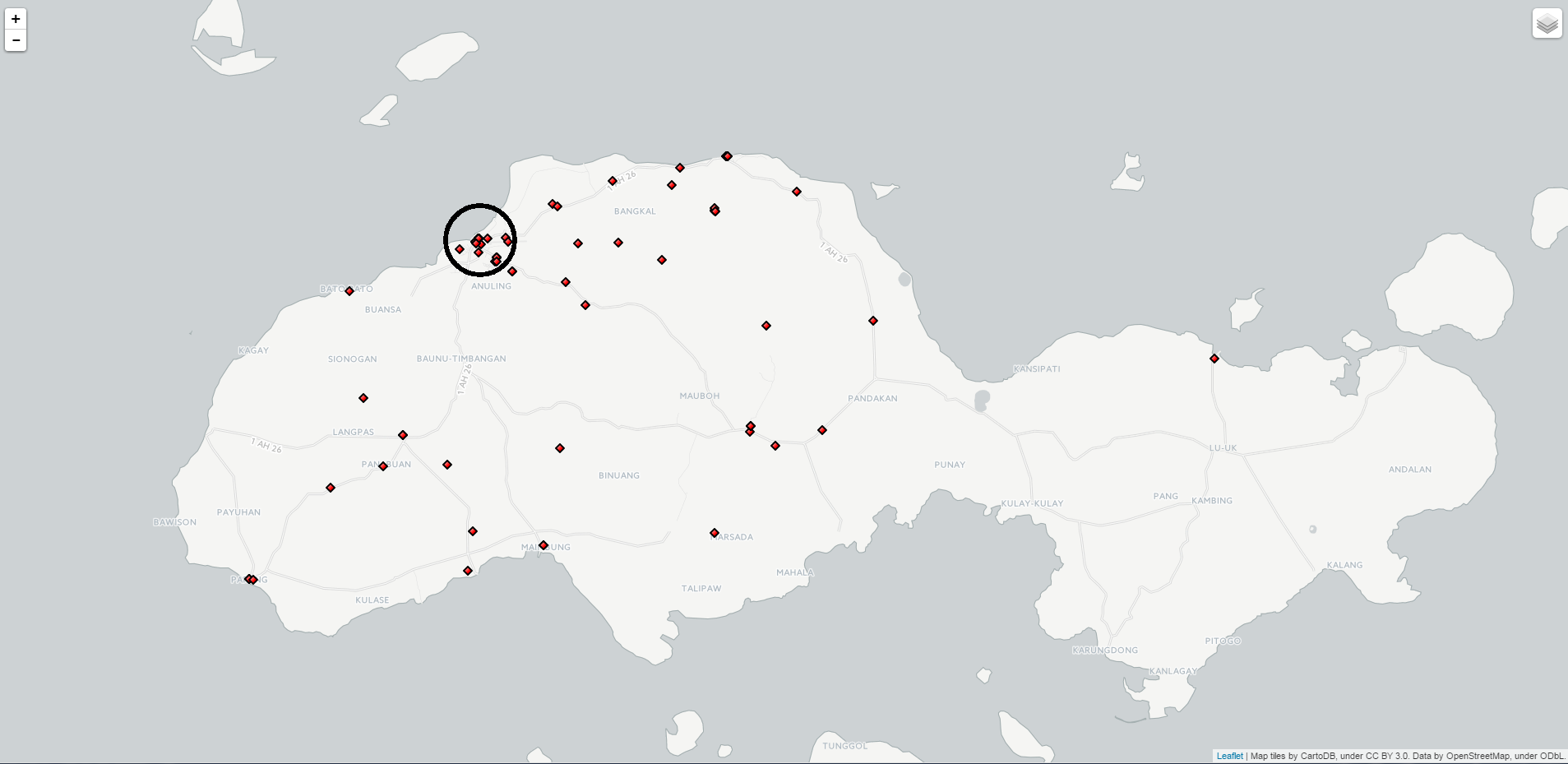By Joyce Rasing
Looking back at last semester’s work, I realized that I plunged right into the data without an in depth research about the Abu Sayyaf Group, especially since this semester I want to perform a small network analysis project by the end of the semester. In addition to working on a side project for Peter Logan, I was able to split the time to focus a bit more on the ethnography of the Abu Sayyaf Group (ASG).
According to the Global Terrorism Database (GTD), various news sources, as well as academic sources, the ASG is responsible for specific terrorist attacks that happen in Malaysia and the Philippines. I already know that the ASG is centralized in the Southern Philippines, which is known to have a high population of Muslim adherents in comparison to a predominantly Catholic and Christian country. Malaysia’s religion is predominately Islam.
Here is how the cultural filter works in my mind:
Southern Philippines & Malaysia ==> Mindanao (Philippines) & Sabah (Malaysia) ==> Moro People, Islam ==> Bajau, Tausug/Suluk, Yakan[1]
Tausug/Suluk is significant because, going back to the listing of the two individuals associated with the ASG on the FBI Terrorist Watchlist, both Hapilon and Sahiron speak Tausug. Hapilon speaks Yakan in addition to Tausug. Both Tausug and Yakan are tribal groups and languages in the Autonomous Region of Muslim Mindanao (ARMM). This can influence who ASG members associate with and talk to, and who they don’t associate with and talk to, especially based on the history of the tribal groups. It can affect recruitment strategy, and the slang used for certain activity[2]. Overall, knowing this positively affects my understanding of how the ASG functions[3].
These are the very beginning stages of trying to connect the ASG with the worldwide Islamic fundamentalist terrorist network. The ASG pledged allegiance to ISIS, and ISIS has returned recognition. Perhaps neither the ASG nor the Philippines will be significant in the average person’s understanding of ISIS and world affairs, but it does not discount the significance in which the ASG is a branch of the tree, and the same process can be applied for any group.
Since most of my progress has been through reading and taking notes, I have no digital production progress at this time. However, I am working on revising last semester’s Python script using the folium package and CartoDB basemaps for a live and interactive map with zoom capability, instead of static maps on QGIS or ArcGIS in addition to developing a database of ASG members and reading about their current activity.

Sources:
Soderberg, Craig, Seymour A. Ashley, and Kenneth S. Olson. “Tausug (Suluk).”
Journal of the International Phonetic Association 42, no. 3 (December
2012): 361-64.
—
[1] These groups are not the only ones of which ARMM is comprised. There are many, many more ethnic groups missing from the Mindanao region. These are only groups that are predominately associated with the Philippines and Malaysia.
[2] Of course, I will not know for sure and nor is one semester enough to entirely grasp the ASG’s recruitment strategy. However, I am interested in displaying the connectivity of the members that I find that do exist, and have had significant influence within the group that have affected current members’ participation and activity.
[3] I do not believe that the identification of an Abu Sayyaf Group member relies solely on his or her ethnicity, nor do I believe that language association adequately serves as sufficient grounds for identifying an ASG member. Those two premises should not serve as necessary conditions for identification of an ASG member. However, recruits must have the ability to communicate with higher ranking members in order to carry out attacks.